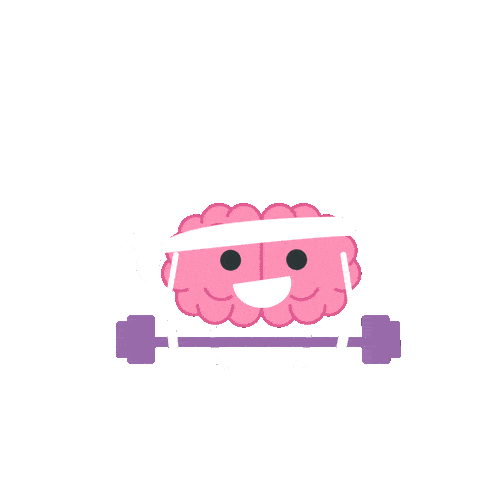Intergenerational exchanges in retirement homes have become a common practice, offering many benefits to young and old alike. In this article, we’ll explore in detail intergenerational activities, the benefits they bring and the collaborative projects that stimulate memories and promote interaction between the generations.
The importance of intergenerational exchanges
Intergenerational exchanges play an essential role in creating a fulfilling social environment in nursing homes. They enable young people to connect with older people, learn from their life experience and develop a deeper understanding of different generations. What’s more, these interactions encourage the sharing of memories, the passing on of traditions and the creation of lasting bonds.
Intergenerational activities: What’s on offer?
Intergenerational activities in retirement homes offer a wide range of possibilities for creating moments of sharing and conviviality between young people and the elderly. Here are a few examples of activities that encourage intergenerational exchanges:
1. Collaborative art projects
Organizing collaborative art projects, such as painting, sculpture or music workshops, enables young and old to share their creative talents and express their imagination. These projects stimulate creativity, promote the exchange of artistic techniques and create emotional bonds between participants.
Let’s take the example of the Harmonie residence, and the testimony of Emily the psychologist. “In our residence, we value creativity in all its forms,” shares psychologist Emily. “The‘Mosaic Memory’ workshop is an activity where local residents and young artists collaborate to create unique works from pieces of the past and present.”
For the life enrichment director Marie, this activity is a way of boosting residents’ self-confidence: “Artistic creation is a powerful means of expression. Our seniors realize that they can still make a significant contribution to society. Younger artists are learning to appreciate ancient stories and merge them with a modern vision.’
2. Physical activities and team games
Physical activities and team games are a great way to bring generations together and promote physical and mental health. Games such as pétanque, group dancing, ball games or outdoor walks enable young and old to share moments of fun, exercise and friendly competition.
This is the case, for example, with our TOP CULTURE competition, which takes place twice a year, bringing together schools, independent living residences and ehpads over a 15-day period. Each team answers general knowledge quizzes, and many teams have been intergenerational! Seniors helped younger people with their questions, and vice versa.
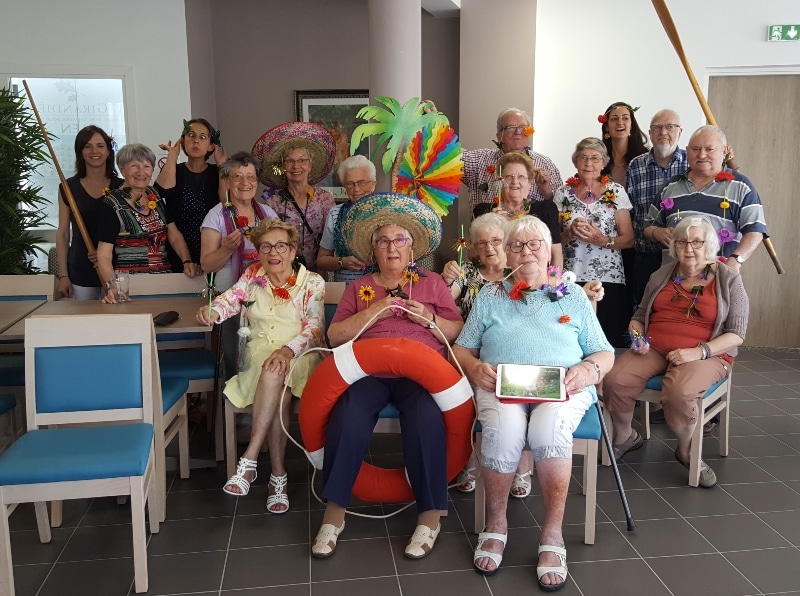
3. Exchange of knowledge and experience
Organizing knowledge and experience exchange sessions is one way of encouraging intergenerational sharing. Young people can present current topics of interest such as technology, social networking or contemporary music, while older people can share their life experiences, stories and traditions. These exchanges encourage mutual learning and strengthen understanding between generations. A case in point is gardening, as is the case at the Paisible Horizon residence. The Intergenerational Gardening Club offers residents a unique sensory experience, according to psychologist Anne-Marie. We have found that contact with nature has a calming effect on our residents. By working side by side with young gardening enthusiasts, our seniors feel revitalized and cheerful.’
For gardener Laura, contact with the earth and plants is a tangible source of well-being: “The residents touch, smell and see the fruits of their labor. This strengthens their self-esteem and connects them to a continuous life cycle. The young gardeners, for their part, discover respect for nature and the importance of intergenerational interaction’.
4. Volunteer projects
Volunteer projects are a unique opportunity to work together to help the community. Young and old alike can get involved in activities such as collecting food, creating gift parcels for those in need, or taking part in environmental actions. These projects reinforce the sense of social usefulness and create close links between generations. There’s also a new form of volunteering, which we can discover at the Light of hope facility with its “Wise Apprentices” program . The “Apprentis Sages” program is at the heart of the Light of Hope home. “We have found that our residents possess a wealth of knowledge and experience that they are delighted to share,” explains psychologist Sophie Martin. “The idea was to use these skills to support young students in the local community.”
2. Cognitive stimulation and memory enhancement
Intergenerational exchanges stimulate memory and cognition in the elderly, encouraging them to recall memories and share their life stories. Thought-provoking activities, board games and enriching discussions enhance seniors’ cognitive abilities and help keep their minds alert.
3. Combating isolation and loneliness
By interacting with young people, the elderly can break the isolation and loneliness they often feel in nursing homes. Social ties and intergenerational friendships create a sense of belonging, joy and emotional well-being. Young people, for their part, benefit from the wisdom and advice of older people, helping them to develop a broader perspective on life.

4. Passing on traditions and cultural heritage
Intergenerational exchanges are a valuable opportunity to pass on traditions, customs and cultural heritage to younger generations. Older people can share stories, experiences and knowledge that enrich cultural understanding and appreciation. This helps preserve and enhance cultural heritage, while fostering a sense of identity and belonging. This is also the case in our nursing home, with its “Linked stories” workshop.
“In our senior living facility, our aim is to forge deep bonds between the generations,” explains psychologist Mr. Smith. “That’s why we regularly organize ‘Connected Stories’ workshops. Children from neighboring schools visit us and are paired with our residents. Together, they share their life stories, create common narratives and mutually enrich each other.”
For Sophie, the activity director, the results are obvious: “The residents regain a sense of usefulness and self-worth. As for the children, they learn empathy and respect for their elders. It’s a precious moment of sharing, where the generations come together around a common story.”
Discover our best intergenerational games
Playing is one of the best antidotes for creating links between the generations, so discover the various games programs adapted to tablets, which have already won over many grandparent-grandchild pairs!
CLINT
A version for grandparents, with lots of games for 2
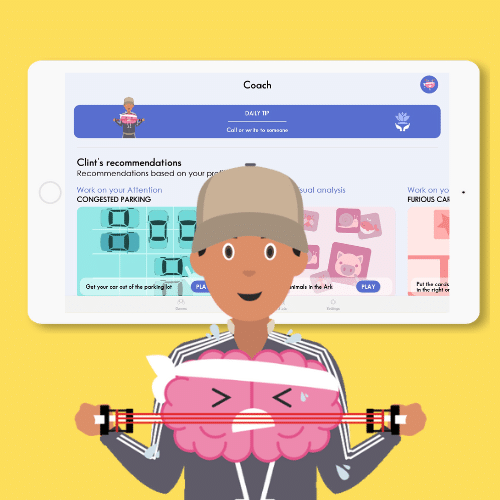
SCARLETT
A very easy version for the older ones, to create a bond
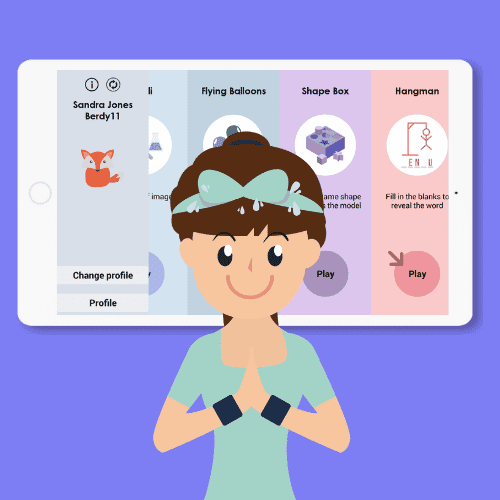
E-MEMORIES
Using memories for reminiscence purposes
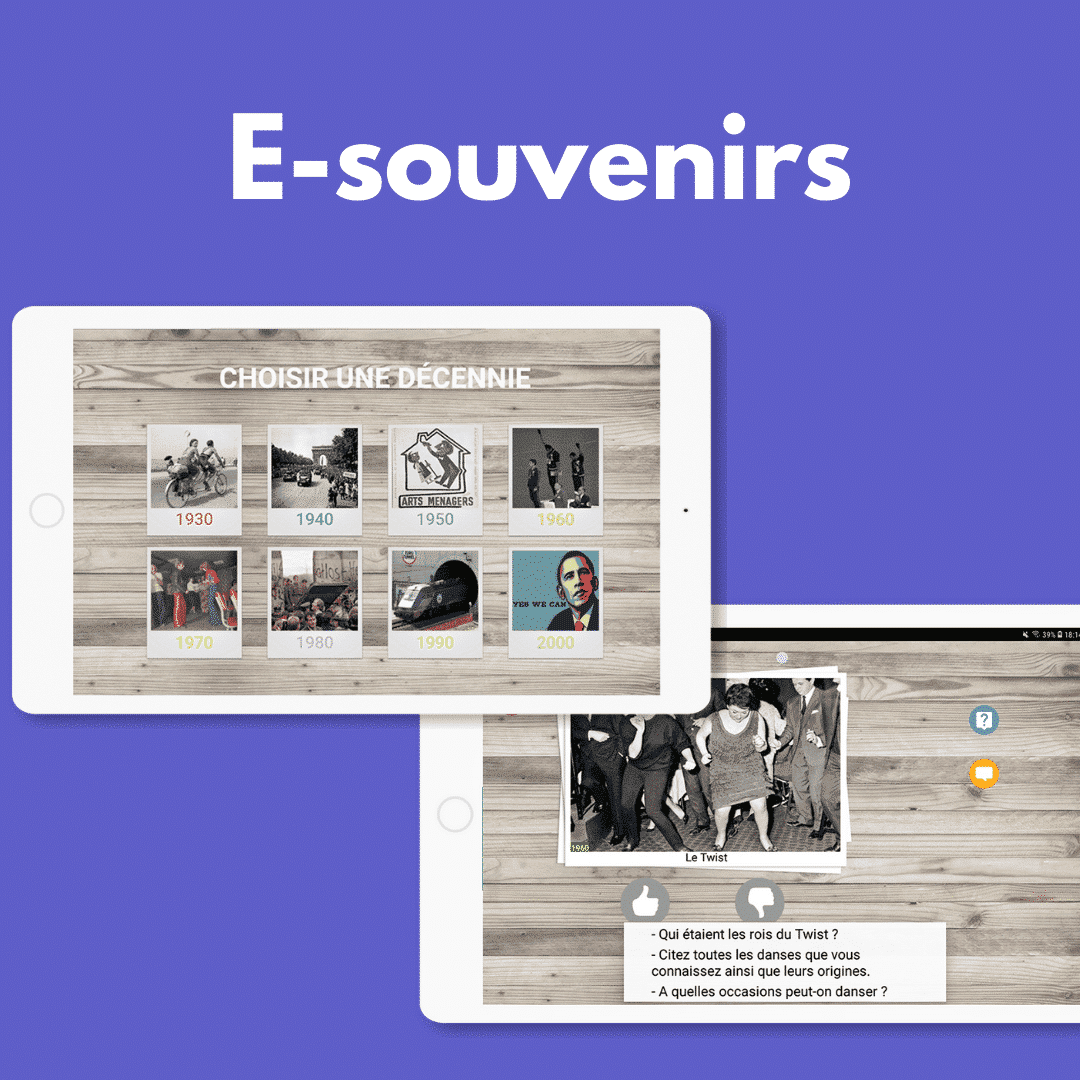
COMING SOON
Other articles that might interest you:
Using Routines to Improve Autonomy for Special Needs Individuals
Autonomy is a fundamental aspect of human life, allowing individuals to make choices and decisions that shape their...
Benefits of Sequencing Systems: A Guide to Better Communication
Communication is a fundamental aspect of human interaction and plays a crucial role in our daily lives. For...
Supporting Patient Autonomy at Home: The Role of Modern Assistive Devices
In the realm of healthcare, the concept of patient autonomy stands as a cornerstone of modern medical practice. It...
